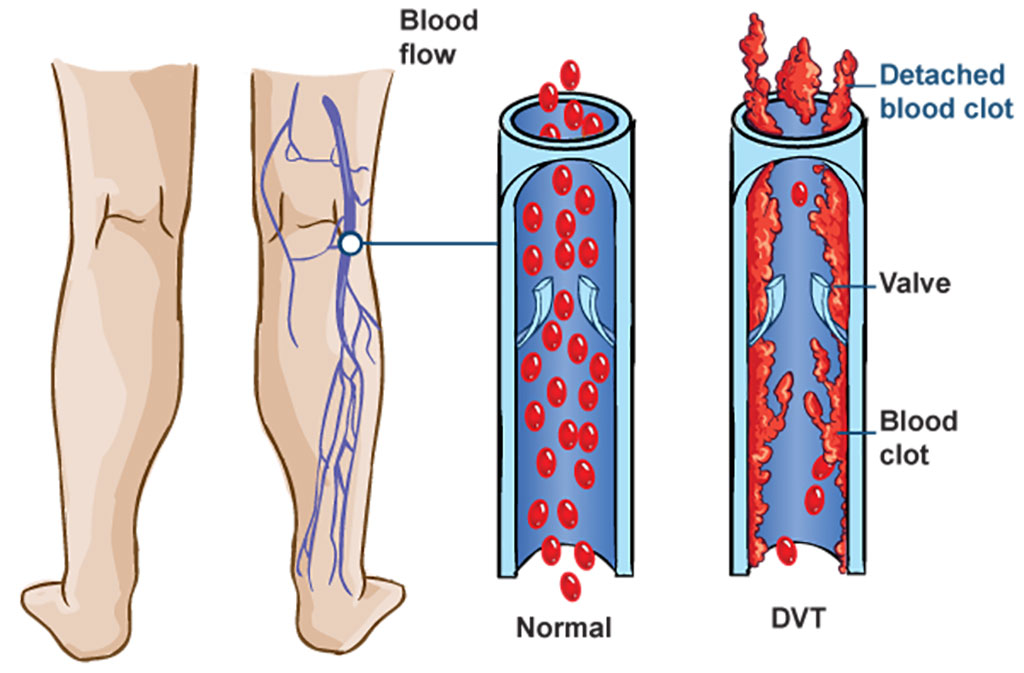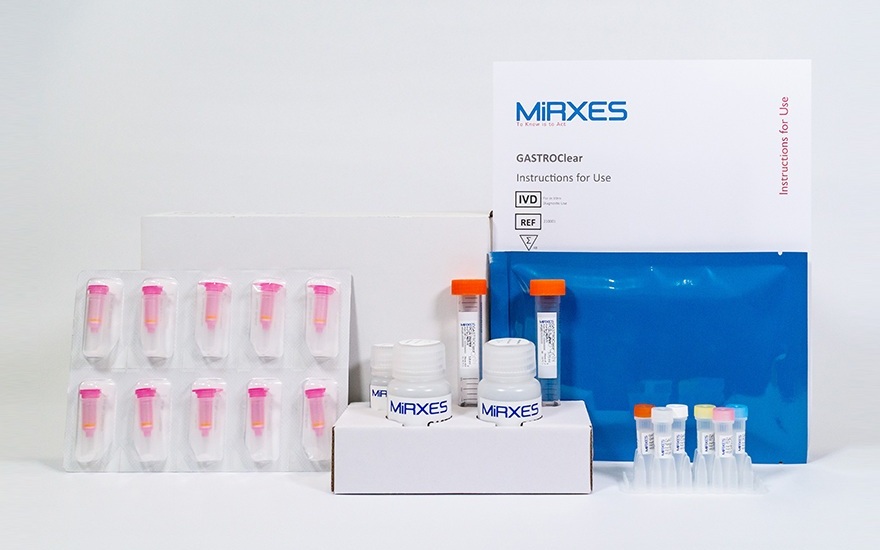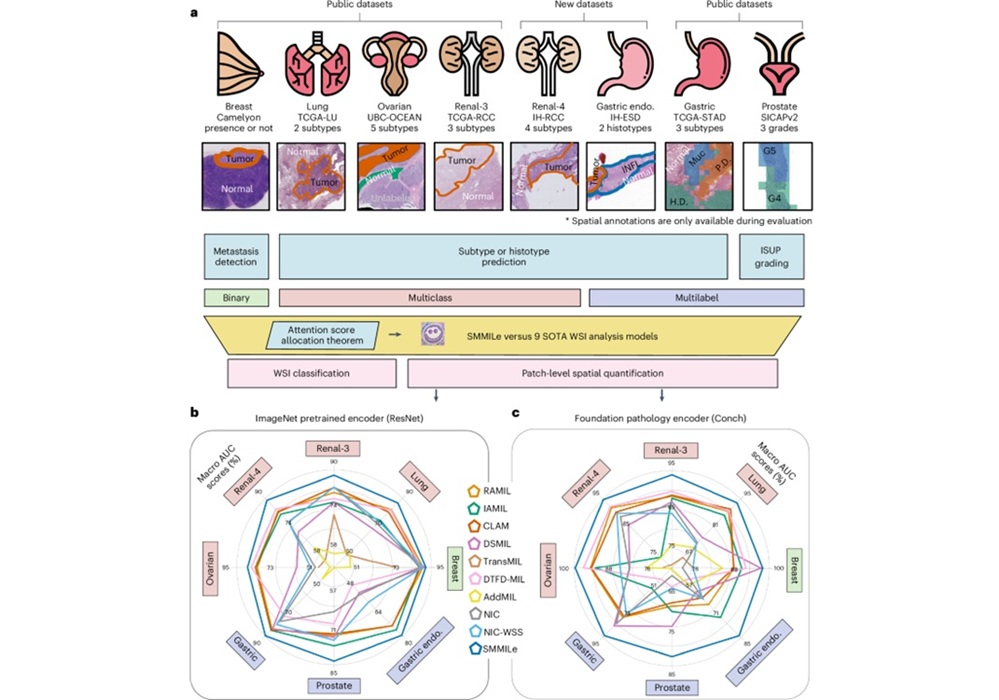Metabolic Syndrome Associated with Increased Blood Clot Recurrence Risk
|
By LabMedica International staff writers Posted on 21 Jan 2020 |

Image: Schematic diagram of deep vein thrombosis (DVT) that is associated with metabolic syndrome (Photo courtesy of MediConnect).
People with metabolic syndrome which are a set of conditions including obesity, impaired glucose metabolism, elevated levels of fats and cholesterol in the blood, and high blood pressure, are more likely to experience recurrent blood clots.
Among patients diagnosed with a type of blood clot known as deep vein thrombosis (DVT), those who also had markers of metabolic syndrome were more likely to experience another venous thromboembolism (VTE) event. Furthermore, as the number of metabolic syndrome conditions that the patients exhibited increased, so too did their likelihood of experiencing VTE recurrence.
Medical scientists from the Indiana University School of Medicine (Indianapolis, IN, USA;) used a statewide database analyze 151,054 patients diagnosed with DVT from 2004 to 2017. They examined four metabolic syndrome components: hypertension (high blood pressure), hyperlipidemia (high levels of fat in the blood), diabetes (high levels of sugar in the blood), and obesity.
The investigators found that 68% of DVT patients had also been diagnosed with at least one of those conditions. The presence of comorbid metabolic syndrome was associated with a 17% increase in overall likelihood of blood clot recurrence. The study also showed that the risk of subsequent blood clots increased with each additional metabolic syndrome component: patients without any of the four markers for metabolic syndrome had a VTE recurrence rate of 7%. Those patients who had been diagnosed with one component of metabolic syndrome were found to be at a 14% risk of additional blood clots, followed by 21% risk among patients with two components, 30% for those with three components, and 37% for those diagnosed with all four components.
Another interesting finding involved the role of anticoagulant therapy. The scientist found that although patients who had been diagnosed with both DVT and metabolic syndrome had higher documented rates and duration of anticoagulant use, the link between metabolic syndrome and increased risk of VTE recurrence persisted. This suggests that metabolic syndrome may have an even greater effect on VTE risk than observed, and that the effect may have been minimized due to anticoagulant therapy.
Lauren K. Stewart, MD, an associate professor and first author of the study, said, “Our aim was to improve understanding of the effect of metabolic syndrome on blood clot recurrence. If patients have VTE recurrence, their quality of life drops, and it drops a lot. We wanted to investigate possible comorbidities and factors that affect recurrence so we could stimulate the search for new potential treatments.” The study was published on January 9, 2020 in the journal Blood Advances
Related Links:
Indiana University School of Medicine
Among patients diagnosed with a type of blood clot known as deep vein thrombosis (DVT), those who also had markers of metabolic syndrome were more likely to experience another venous thromboembolism (VTE) event. Furthermore, as the number of metabolic syndrome conditions that the patients exhibited increased, so too did their likelihood of experiencing VTE recurrence.
Medical scientists from the Indiana University School of Medicine (Indianapolis, IN, USA;) used a statewide database analyze 151,054 patients diagnosed with DVT from 2004 to 2017. They examined four metabolic syndrome components: hypertension (high blood pressure), hyperlipidemia (high levels of fat in the blood), diabetes (high levels of sugar in the blood), and obesity.
The investigators found that 68% of DVT patients had also been diagnosed with at least one of those conditions. The presence of comorbid metabolic syndrome was associated with a 17% increase in overall likelihood of blood clot recurrence. The study also showed that the risk of subsequent blood clots increased with each additional metabolic syndrome component: patients without any of the four markers for metabolic syndrome had a VTE recurrence rate of 7%. Those patients who had been diagnosed with one component of metabolic syndrome were found to be at a 14% risk of additional blood clots, followed by 21% risk among patients with two components, 30% for those with three components, and 37% for those diagnosed with all four components.
Another interesting finding involved the role of anticoagulant therapy. The scientist found that although patients who had been diagnosed with both DVT and metabolic syndrome had higher documented rates and duration of anticoagulant use, the link between metabolic syndrome and increased risk of VTE recurrence persisted. This suggests that metabolic syndrome may have an even greater effect on VTE risk than observed, and that the effect may have been minimized due to anticoagulant therapy.
Lauren K. Stewart, MD, an associate professor and first author of the study, said, “Our aim was to improve understanding of the effect of metabolic syndrome on blood clot recurrence. If patients have VTE recurrence, their quality of life drops, and it drops a lot. We wanted to investigate possible comorbidities and factors that affect recurrence so we could stimulate the search for new potential treatments.” The study was published on January 9, 2020 in the journal Blood Advances
Related Links:
Indiana University School of Medicine
Latest Hematology News
- Platelet Activity Blood Test in Middle Age Could Identify Early Alzheimer’s Risk
- Microvesicles Measurement Could Detect Vascular Injury in Sickle Cell Disease Patients
- ADLM’s New Coagulation Testing Guidance to Improve Care for Patients on Blood Thinners
- Viscoelastic Testing Could Improve Treatment of Maternal Hemorrhage
- Pioneering Model Measures Radiation Exposure in Blood for Precise Cancer Treatments
- Platelets Could Improve Early and Minimally Invasive Detection of Cancer
- Portable and Disposable Device Obtains Platelet-Rich Plasma Without Complex Equipment
- Disposable Cartridge-Based Test Delivers Rapid and Accurate CBC Results
- First Point-of-Care Heparin Monitoring Test Provides Results in Under 15 Minutes

- New Scoring System Predicts Risk of Developing Cancer from Common Blood Disorder
- Non-Invasive Prenatal Test for Fetal RhD Status Demonstrates 100% Accuracy
- WBC Count Could Predict Severity of COVID-19 Symptoms
- New Platelet Counting Technology to Help Labs Prevent Diagnosis Errors
- Streamlined Approach to Testing for Heparin-Induced Thrombocytopenia Improves Diagnostic Accuracy
- POC Hemostasis System Could Help Prevent Maternal Deaths
- New Test Assesses Oxygen Delivering Ability of Red Blood Cells by Measuring Their Shape
Channels
Clinical Chemistry
view channel
Chemical Imaging Probe Could Track and Treat Prostate Cancer
Prostate cancer remains a leading cause of illness and death among men, with many patients eventually developing resistance to standard hormone-blocking therapies. These drugs often lose effectiveness... Read more
Mismatch Between Two Common Kidney Function Tests Indicates Serious Health Problems
Creatinine has long been the standard for measuring kidney filtration, while cystatin C — a protein produced by all human cells — has been recommended as a complementary marker because it is influenced... Read moreMolecular Diagnostics
view channel
Blood Protein Profiles Predict Mortality Risk for Earlier Medical Intervention
Elevated levels of specific proteins in the blood can signal increased risk of mortality, according to new evidence showing that five proteins involved in cancer, inflammation, and cell regulation strongly... Read more
First Of Its Kind Blood Test Detects Gastric Cancer in Asymptomatic Patients
Each year, over 1 million people worldwide are diagnosed with gastric (stomach) cancer, and over 800,000 people die of the disease. It is among the top 5 deadliest cancers worldwide for both men and women.... Read moreImmunology
view channel
Gene Signature Test Predicts Response to Key Breast Cancer Treatment
DK4/6 inhibitors paired with hormone therapy have become a cornerstone treatment for advanced HR+/HER2– breast cancer, slowing tumor growth by blocking key proteins that drive cell division.... Read more
Chip Captures Cancer Cells from Blood to Help Select Right Breast Cancer Treatment
Ductal carcinoma in situ (DCIS) accounts for about a quarter of all breast cancer cases and generally carries a good prognosis. This non-invasive form of the disease may or may not become life-threatening.... Read moreMicrobiology
view channel
Rapid Assay Identifies Bloodstream Infection Pathogens Directly from Patient Samples
Bloodstream infections in sepsis progress quickly and demand rapid, precise diagnosis. Current blood-culture methods often take one to five days to identify the pathogen, leaving clinicians to treat blindly... Read more
Blood-Based Molecular Signatures to Enable Rapid EPTB Diagnosis
Extrapulmonary tuberculosis (EPTB) remains difficult to diagnose and treat because it spreads beyond the lungs and lacks easily accessible biomarkers. Despite TB infecting 10 million people yearly, the... Read more
15-Minute Blood Test Diagnoses Life-Threatening Infections in Children
Distinguishing minor childhood illnesses from potentially life-threatening infections such as sepsis or meningitis remains a major challenge in emergency care. Traditional tests can take hours, leaving... Read more
High-Throughput Enteric Panels Detect Multiple GI Bacterial Infections from Single Stool Swab Sample
Gastrointestinal (GI) infections are among the most common causes of illness worldwide, leading to over 1.7 million deaths annually and placing a heavy burden on healthcare systems. Conventional diagnostic... Read morePathology
view channel
AI Tool Rapidly Analyzes Complex Cancer Images for Personalized Treatment
Complex digital biopsy images that typically take an expert pathologist up to 20 minutes to assess can now be analyzed in about one minute using a new artificial intelligence (AI) tool. The technology... Read more
Diagnostic Technology Performs Rapid Biofluid Analysis Using Single Droplet
Diagnosing disease typically requires milliliters of blood drawn at clinics, depending on needles, laboratory infrastructure, and trained personnel. This process is often painful, resource-intensive, and... Read moreTechnology
view channel
AI Saliva Sensor Enables Early Detection of Head and Neck Cancer
Early detection of head and neck cancer remains difficult because the disease produces few or no symptoms in its earliest stages, and lesions often lie deep within the head or neck, where biopsy or endoscopy... Read more
AI-Powered Biosensor Technology to Enable Breath Test for Lung Cancer Detection
Detecting lung cancer early remains one of the biggest challenges in oncology, largely because current tools are invasive, expensive, or unable to identify the disease in its earliest phases.... Read moreIndustry
view channel
Abbott Acquires Cancer-Screening Company Exact Sciences
Abbott (Abbott Park, IL, USA) has entered into a definitive agreement to acquire Exact Sciences (Madison, WI, USA), enabling it to enter and lead in fast-growing cancer diagnostics segments.... Read more























